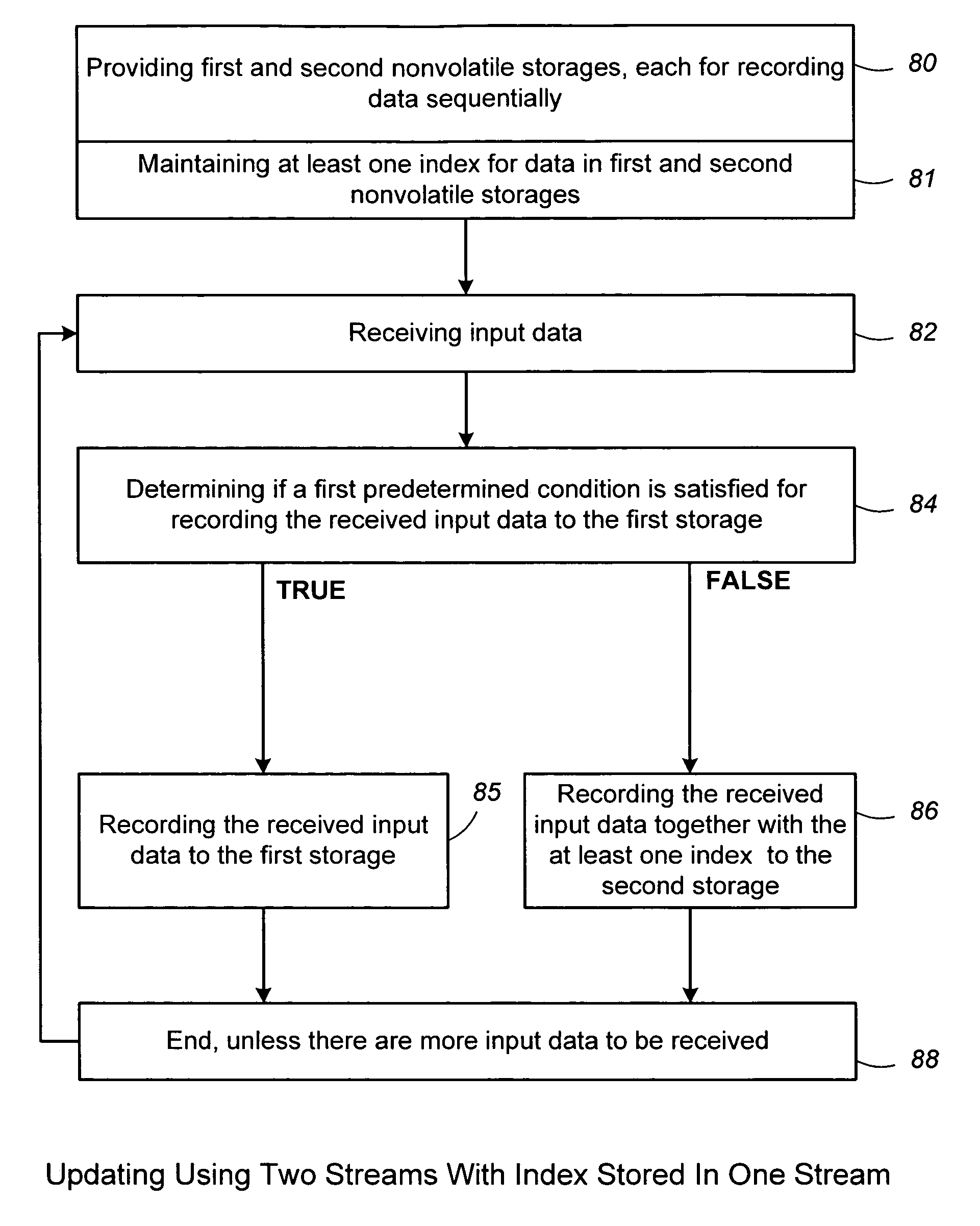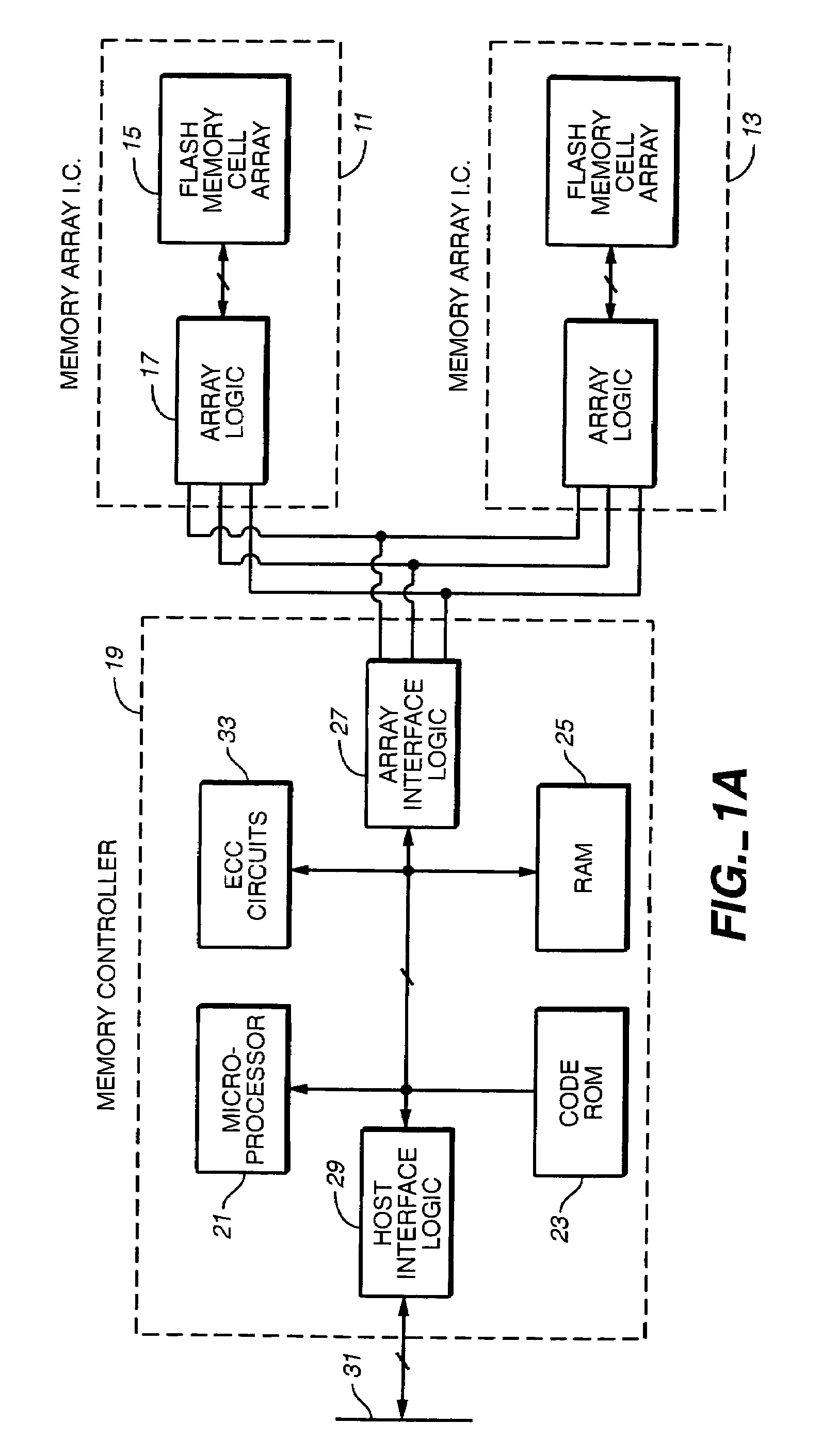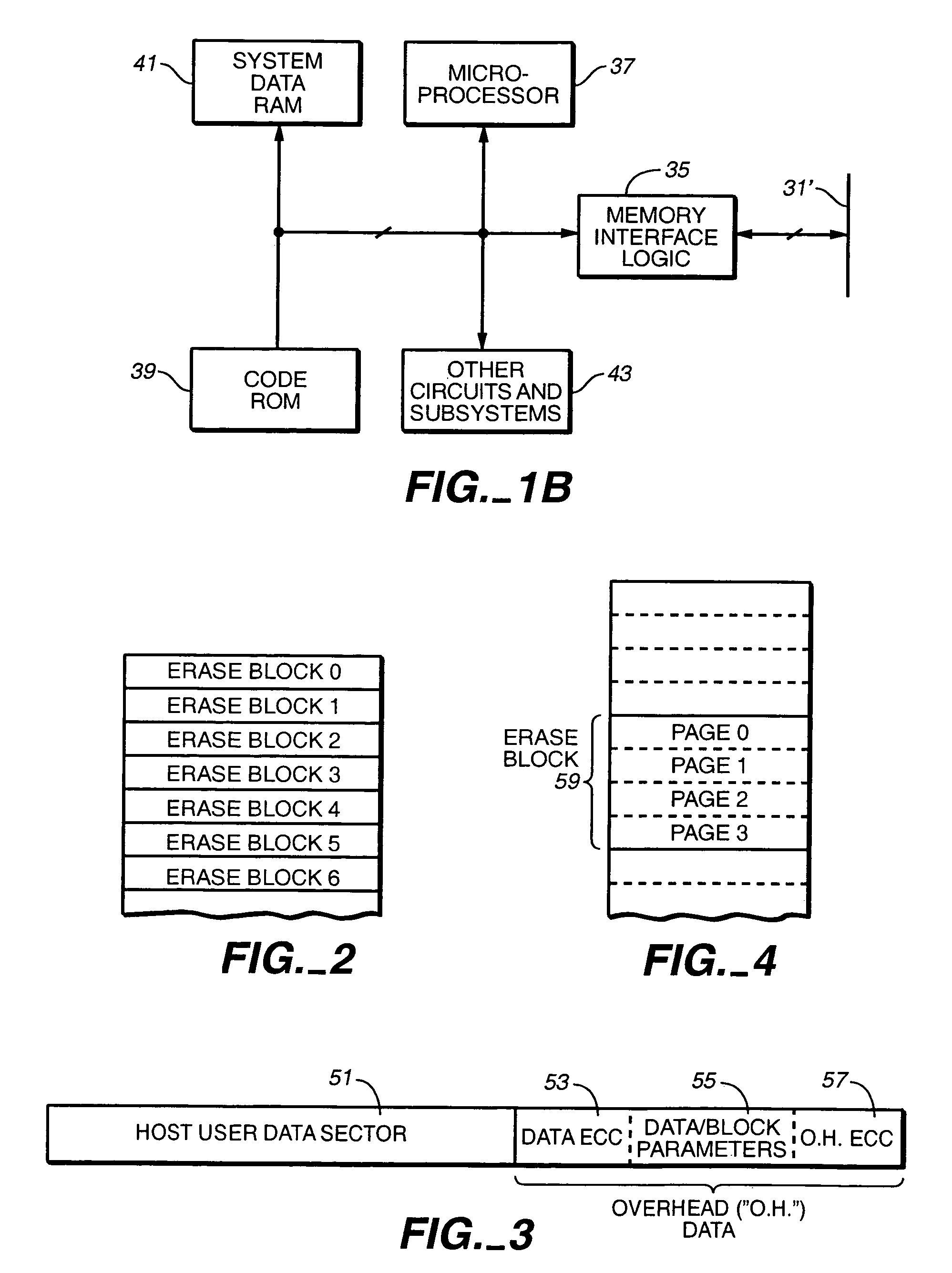Non-volatile memory and method with multi-stream update tracking
a non-volatile memory and update tracking technology, applied in the direction of memory architecture accessing/allocation, instruments, computing, etc., can solve the problems of erroneous data to be read, storage level shift, less than optimal wear leveling, etc., to improve the performance of the memory system, improve the degree of parallelism, and efficiently write
- Summary
- Abstract
- Description
- Claims
- Application Information
AI Technical Summary
Benefits of technology
Problems solved by technology
Method used
Image
Examples
embodiment
Scratch-Pad-Block Write Pointer Embodiment
[0241]According to another embodiment of the invention, synchronization information is maintained that would allow determination of whether a given logical sector buffered in the scratch pad block has been rendered obsolete by subsequent writes to the update block. This is accomplished by including a scratch-pad write pointer that gives the address of the location for the next write in the scratch pad block at the time the synchronization information is stored in a page of the update block.
[0242]FIG. 35A and FIG. 35B shows the intermediate state of the scratch pad block and the update block relative to the scratch-pad write pointer respectively after the successive host writes of FIG. 33A and FIG. 33B.
[0243]FIG. 35A illustrates the state of the scratch pad block and the update block after host write #1. In host write #1, the logical sector LS10′ belongs to slot 3 of the page and not at a page boundary and is therefore recorded in a partial p...
PUM
 Login to View More
Login to View More Abstract
Description
Claims
Application Information
 Login to View More
Login to View More - R&D
- Intellectual Property
- Life Sciences
- Materials
- Tech Scout
- Unparalleled Data Quality
- Higher Quality Content
- 60% Fewer Hallucinations
Browse by: Latest US Patents, China's latest patents, Technical Efficacy Thesaurus, Application Domain, Technology Topic, Popular Technical Reports.
© 2025 PatSnap. All rights reserved.Legal|Privacy policy|Modern Slavery Act Transparency Statement|Sitemap|About US| Contact US: help@patsnap.com



